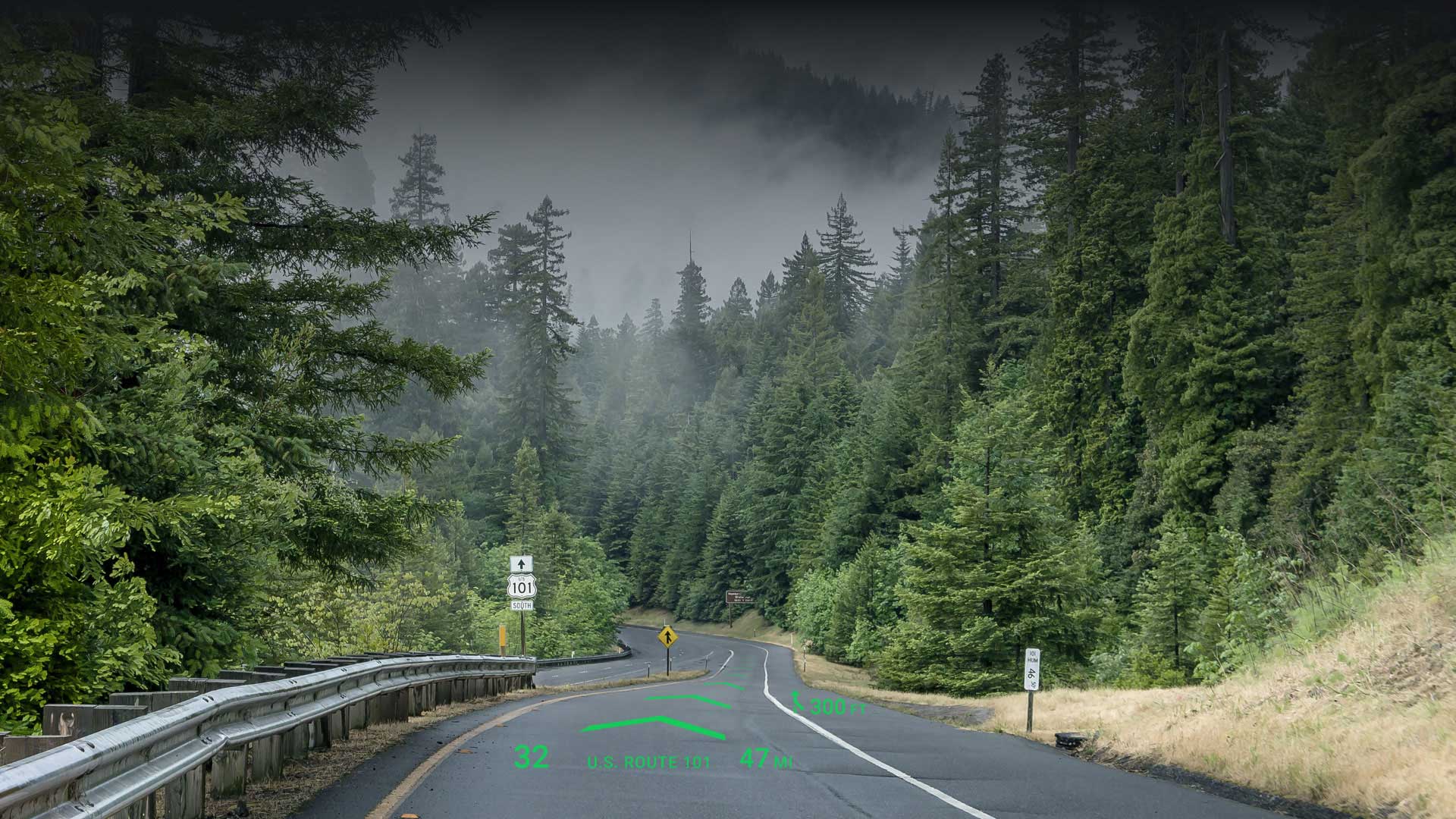

We may earn revenue from the products available on this page and participate in affiliate programs. Learn more ›
You already know this, but phone tech changes far more quickly than anything carmakers can build into your next car. After all, whatever’s in your 2016 Golf started development at least two years ago.
Case in point, news that a device called the WayRay, from a Swiss startup called Navion, can overlay augmented reality onto your windshield. Think live Google Street View.
The tech holographically projects objects such as street signs and navigation cues out onto the street ahead of you. Yes, they’re even exploring some of the tech that Waze supplies (i.e., augmented reality speed traps, projected onto the road ahead of you). Of course what you see is actually an optical illusion, because the objects simply appear to be in the distance when in fact they’re bounced to your field of view onto a transparent film on the backside of the windscreen glass.

Hook the WayRay up to your phone via Bluetooth, and it also bounces texts and voicemail through, and you can interact with the device via voice and even gestures.
Interestingly, the interactive tech is coming backhandedly by way of none other than Tesla.
That is, while the WayRay was announced back in September, the company needed a tech assist for their telematics and navigation to work in the U.S., and they found an outfit called Orange Business Services that provides mobile connectivity to Tesla Motors, Renault Group and PSA Peugeot Citroën.

WayRay’s genesis story dates to 2012, when founder and CEO Vitaly Ponomarev wrecked in Moscow while paying attention to his brand-new GPS unit rather than to the road ahead. Ever since, his goal has been to get turn-by-turn and other information into the driver’s line of vision, without relying on Garmins or TomToms or other peripheral hardware. He says, by the way, that WayRay is simply too fast to play nice with Apple’s CarPlay or Android Auto.
Expect the Navion to go on sale with several models in 2016, ranging between $300-$500.
